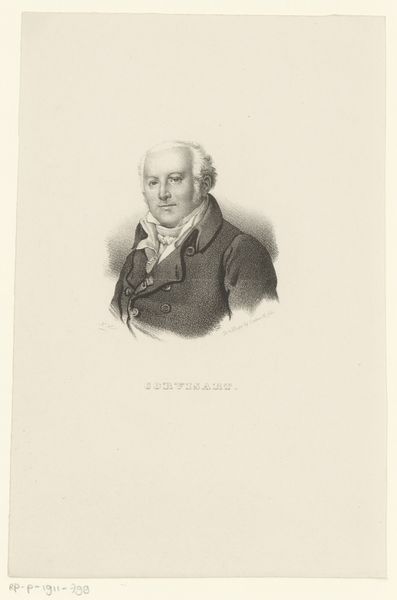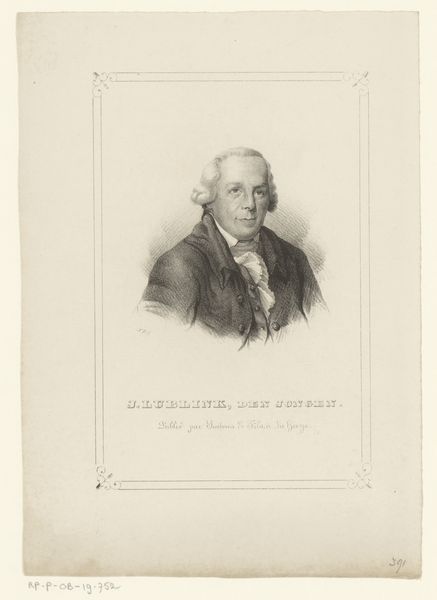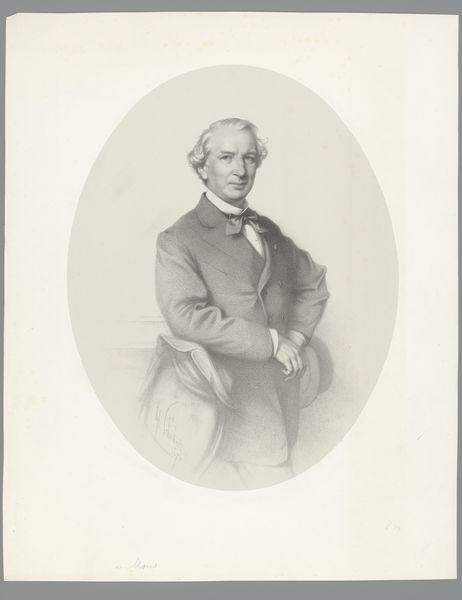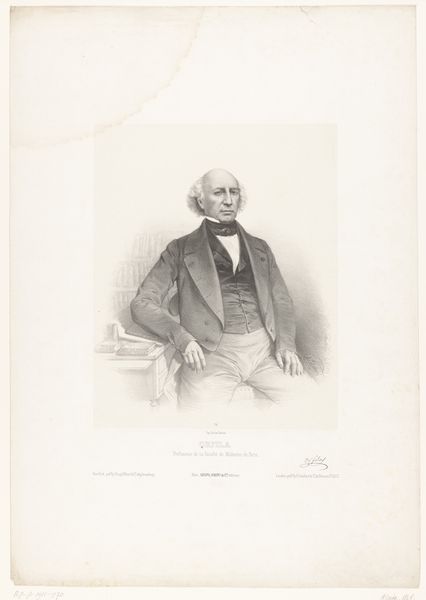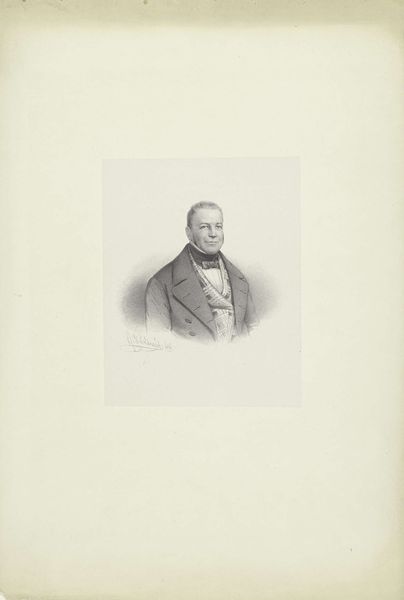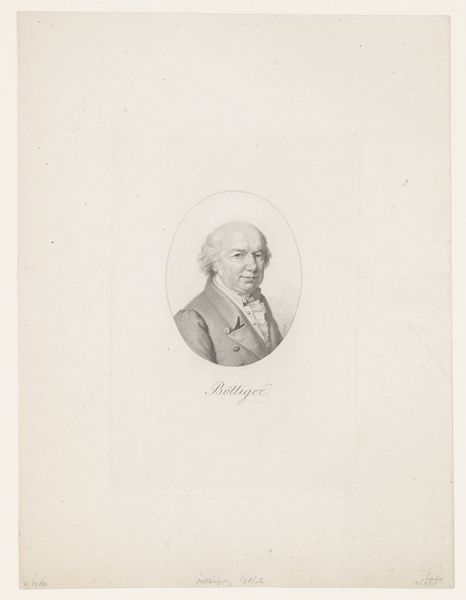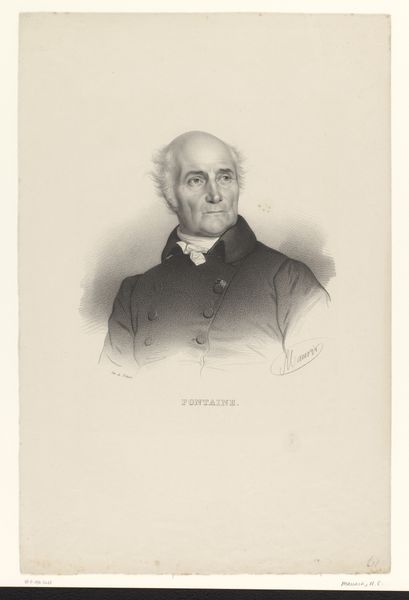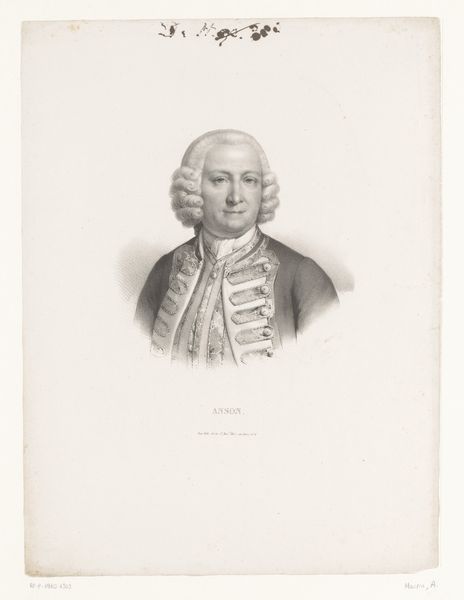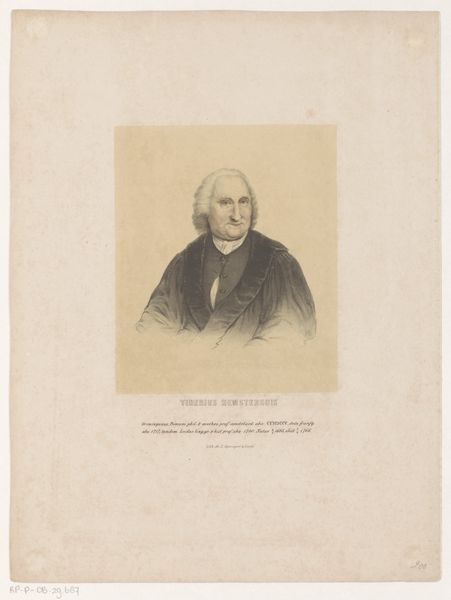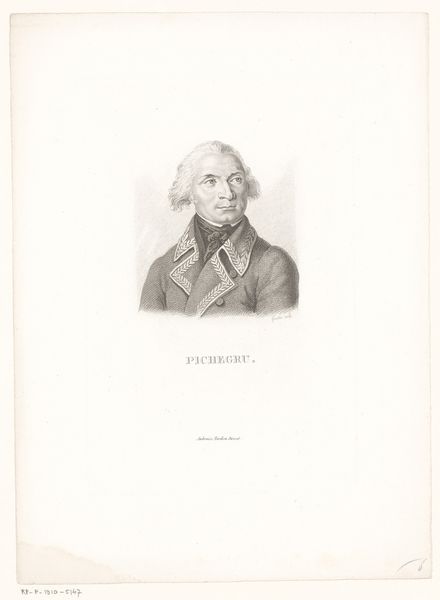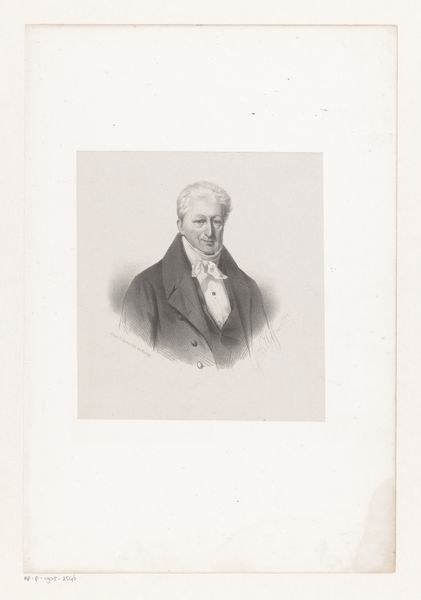
drawing, pencil, charcoal
#
drawing
#
pencil sketch
#
charcoal drawing
#
pencil drawing
#
pencil
#
charcoal
#
realism
Dimensions: height 445 mm, width 310 mm
Copyright: Rijks Museum: Open Domain
Editor: This is a portrait of an unknown man by Gerhardus Fredericus Eilbracht, created sometime between 1826 and 1854. It's a drawing made with pencil and charcoal. It has a stark, almost clinical feel. What do you see in this piece? Curator: The medium is central. Eilbracht's choice of pencil and charcoal points to specific social and economic realities. Unlike oil paint, these materials were relatively inexpensive and readily available, expanding the possibility for portraiture to a wider segment of the aspiring middle class. The "realism" tag invites us to consider how these materials contributed to the image's perceived accuracy and its function within a burgeoning market for likenesses. Do you notice how the hatching and cross-hatching with these dry media builds up the tones, creating a sense of volume without the sheen of paint? Editor: Yes, I see that. It almost feels mass-produced because the lines are so regular and the gray tone is uniform. The medium also emphasizes the man’s austere features. Was that intentional, to represent a particular kind of man? Curator: Precisely! Think about the social function of portraiture in the 19th century. It wasn't merely about capturing a likeness. It was about projecting status, respectability, and, in this case perhaps, bourgeois values like industry and sobriety. Eilbracht's method, his *making* of the image through laborious mark-making, subtly reinforces those values. The *act* of drawing and the visible *labor* involved, mirrors the labor this man likely invested in accumulating capital and standing. It begs the question: how much did he invest in its production? Editor: That makes me think differently about the "simplicity" of the drawing, since even inexpensive materials are costly in terms of labor. Curator: Exactly. It encourages us to think about the labor involved in producing and consuming art in 19th century Netherlands, and how that intersected with social hierarchies.
Comments
No comments
Be the first to comment and join the conversation on the ultimate creative platform.
